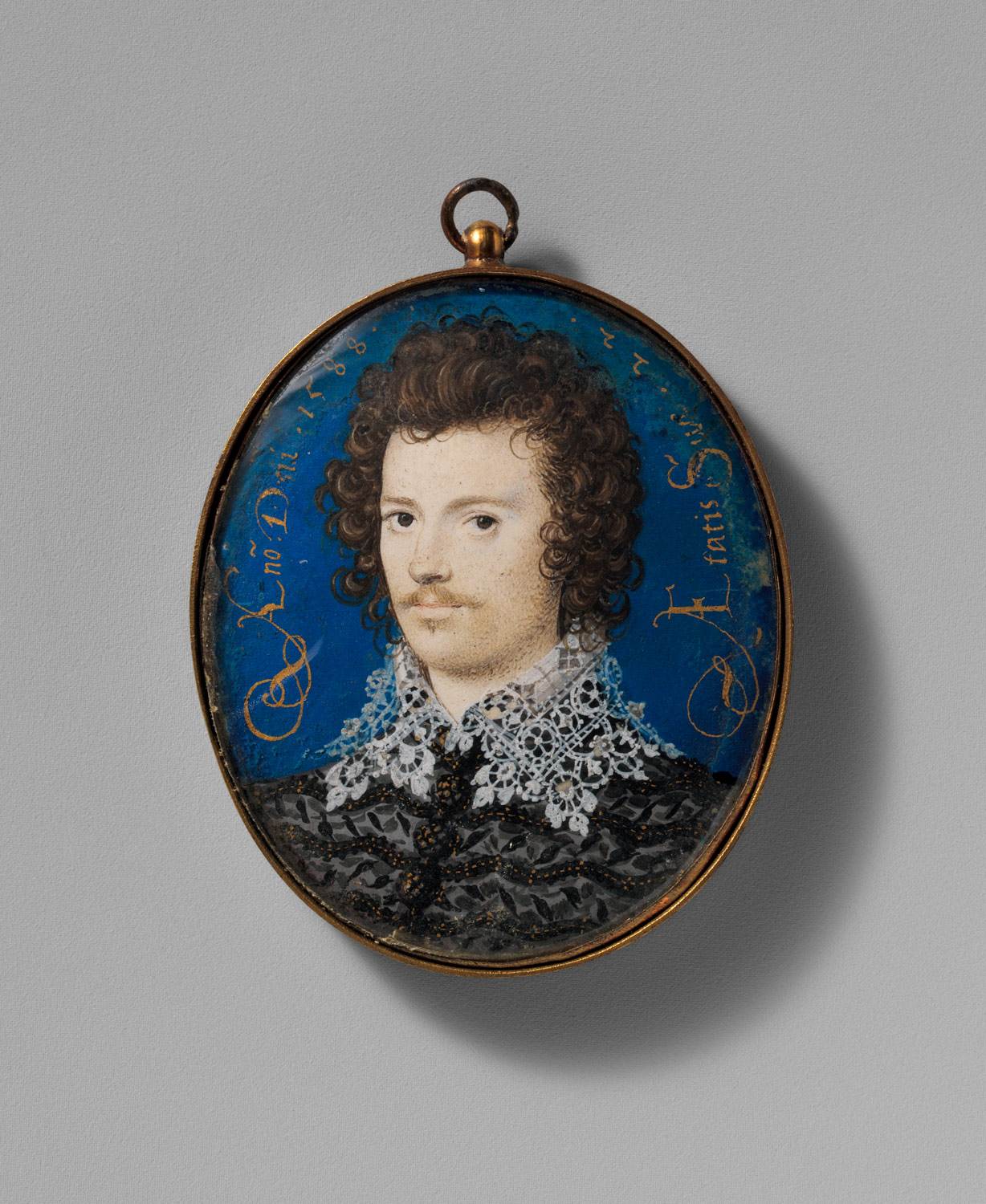The Artist: Nicholas Hilliard, the son of Richard Hilliard, an Exeter goldsmith, made his earliest known miniatures in 1560. He served his apprenticeship as a goldsmith, beginning in 1562 with Robert Brandon, whose daughter Alice he was to marry in 1576. He became free of the Goldsmiths' Company in 1569. According to his treatise, The Arte of Limning, he had trained himself in miniature painting by following Holbein's technique and by copying engravings by Dürer and other masters. Hilliard enjoyed high favor with Elizabeth I (1533–1603) from 1572, but her slowness in making payments led him to work in France from 1576 to 1578/79. On his return he was much employed at the English court in miniature painting and remained the dominant figure in the art until the emergence of his pupil Isaac Oliver (1565?–1617) in the 1590s. Hilliard was court limner to James I (1566–1625) from his accession in 1603; however, the queen, Anne of Denmark, and their son Henry Frederick, Prince of Wales, preferred Oliver's more Continental style. Hilliard, who seems to have been notably improvident, died in poverty in January 1619.
The Miniature: When this miniature was first the subject of discussion, it was regarded as a portrait of Fulke Greville (1554–1628), first baron Brooke, by Isaac Oliver; it is described in those terms by Williamson in his catalogue of the Pierpont Morgan collection (1906) and in his article of 1907. In the Pierpont Morgan sale, 1935, it was listed as a portrait of a nobleman, "said to be the
1st Lord Brooke," by Oliver. This identification may have arisen from its provenance at Warwick Castle, the home of Lord Brooke. But he was born in 1554 and was thirty-four in 1588, dates that do not tally with those inscribed on this miniature.
Winter (1943) appears to have been the first to recognize in this portrait a major work by Nicholas Hilliard. He also pointed out that the youth is represented in Hilliard's full-length Portrait ofa Young Man Among Roses in the Victoria and Albert Museum (no. P.163-1910 and see Auerbach 1961, no. 78, pl. 80). The sitter is also probably seen in a miniature by Hilliard in the collection of the duke of Rutland (Auerbach 1961, no. 80, pl. 82).
In 1957 Piper, who believed that the Metropolitan, Victoria and Albert, and Rutland miniatures represent the same sitter, identified him as Robert Devereux, second earl of Essex, by comparison with a painting by Sir William Segar (active late sixteenth century) in the National Gallery of Ireland, Dublin, which is dated 1590. The present miniature plays an important role in this identification, since it is the only one which bears a date and the sitter's age; these are consistent with the view that it portrays Essex, who was born in 1566. Auerbach doubted whether the three miniatures represent the same person and was cautious about the identification of the sitter as Essex. In his extensive discussion of A Young Man Among Roses, Strong (1977) concludes that it does represent Essex and that this work also portrays him.
To summarize, the sitter in the present miniature is almost certainly depicted in the full-length portrait in the Victoria and Albert Museum and may also be represented in the duke of Rutland's miniature. Comparison with the earliest known portraits of Essex, before he grew a beard on the expedition to Cadiz in 1596, suggests that the same man is represented in the Metropolitan miniature, and the fact that the age and date on the work agree with those of Essex supports this identification.
The Sitter: Robert Devereux (1566–1601), second earl of Essex, soldier and statesman, was a favorite of Elizabeth I (1533–1603), who was more than thirty years his senior. He appeared at court in 1587 and she soon grew seriously infatuated. Devereux was created master of the horse in that year. In 1590, risking the queen's ire, he secretly married Frances Walsingham. He led a successful attack on Cadiz in 1596 and was created earl marshal in 1597 and chancellor of Cambridge University in 1598. He was appointed governor general of Ireland in 1599. On his return from this unsuccessful mission he attempted to raise a rebellion against the queen and was executed as a traitor in 1601.
[2015; adapted from Reynolds and Baetjer 1996]

iBet uBet web content aggregator. Adding the entire web to your favor.
Link to original content: http://www.metmuseum.org/toah/works-of-art/35.89.4
